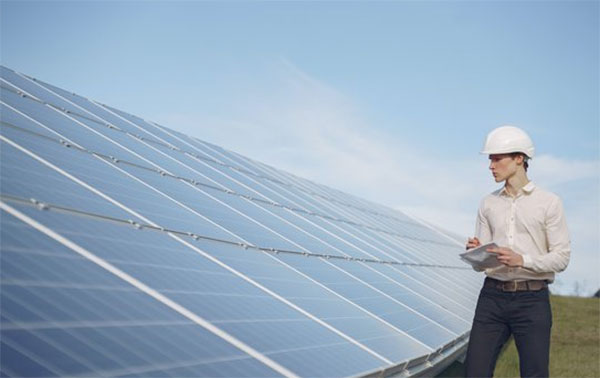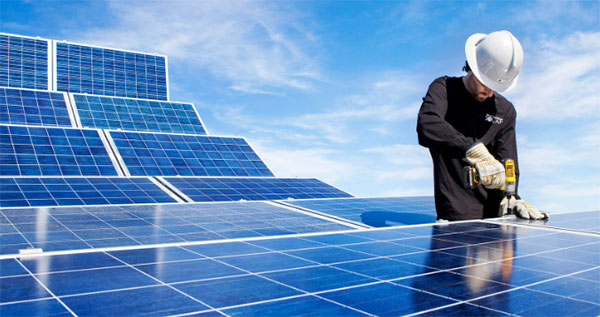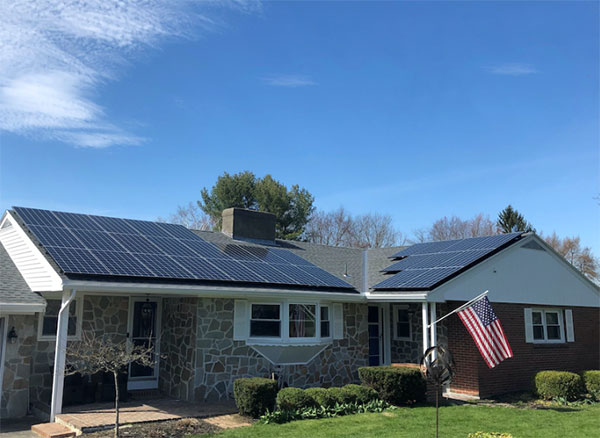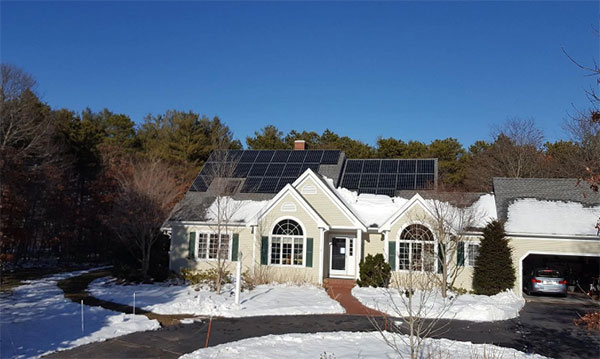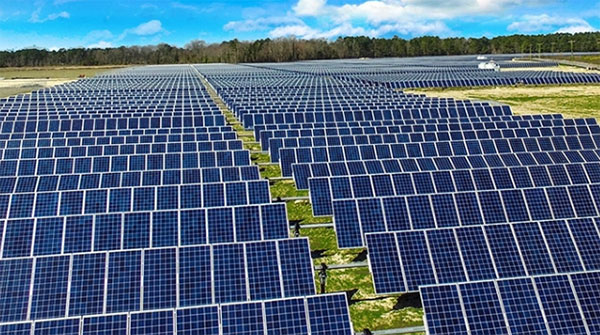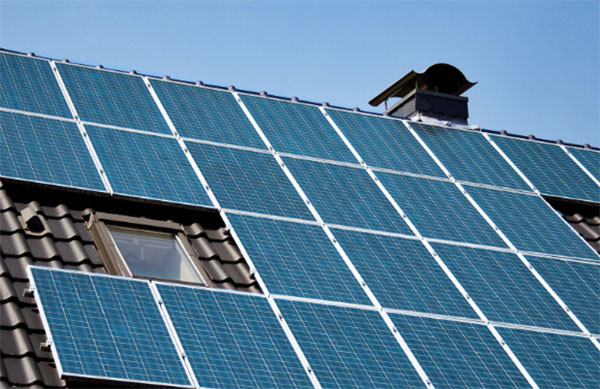Description
Yes, solar panels produce significantly more energy during their lifespan than the energy used in their manufacturing, making them a sustainable energy source.The Energy Payback Time of Solar Panels
Definition and Importance
Energy Payback Time (EPT) is the length of time it takes for a solar panel to generate the amount of energy equal to that used during its production processes. This metric is important for assessing the sustainability and environmental benefits of solar panels. Panels with shorter EPTs are viewed as more energy-efficient and eco-friendly, as they begin "netting" energy savings earlier on.
Calculating Energy Payback Time
Energy Payback Time is calculated by dividing the energy input in the manufacturing process by the average annual energy output of the panel. The formula is quite simple: EPT = (Energy Input) / (Annual Energy Output). As an example, if a solar panel requires 1000 kWh to produce and generates 100 kWh per year, its EPT would be 10 years.
Factors Influencing Energy Payback
Several factors have a significant influence on the EPT of solar panels, including:
- Panel Efficiency: Higher efficiency panels produce more energy over their lifespan, leading to shorter EPTs. As of my last update, typical commercial solar panels were between 15% and 22% efficient.
- Manufacturing Location: The location of energy source used to create the panels will have an impact on EPT. Panels made with renewable energy sources have lower EPT due to less carbon emissions and energy usage.
- Material Quality: The quality of the materials used in solar panels has an impact on their life and efficiency. High quality silicon for example can make a panel more durable and efficient, thereby effecting its EPT.
- Geographic Location of Installation: The amount of sunlight a panel gets directly impacts its energy output. Solar panels installed in high solar irradiance locations, such as deserts, have shorter EPTs compared to those in less sunny areas.
- Technological Advances: Innovations in solar technology can reduce EPT by creating more efficient production methods and higher efficiency panels. Recent work using new photovoltaic materials, like perovskite, is an exciting area that could lead to much shorter EPT.
Lifecycle Analysis of Solar Panels
Manufacturing Process and Energy Input
The manufacturing process of solar panels involves several energy-intensive steps, starting from the extraction and purification of raw materials, such as silicon, to the assembly of the solar cells into panels. The energy input required to produce a typical solar panel is approximately 4,000 to 4,500 kWh/m² of panel produced. This process also includes the use of high-purity silicon, which is the most energy-consuming part due to the need for significant heating and cooling cycles. Innovations aimed at reducing the silicon purity requirement without compromising efficiency could significantly reduce energy inputs and associated costs.- Material Quality and Efficiency: The choice of material directly impacts the panel's efficiency and cost. Monocrystalline silicon panels, for instance, offer efficiencies up to 22%, higher than polycrystalline silicon panels, which have efficiencies around 15-17%. However, monocrystalline panels are more expensive due to the more energy-intensive manufacturing process.
Operation and Energy Output
Once installed, solar panels operate by converting sunlight into electricity with no emissions or additional energy input. The average lifespan of a solar panel is 25 to 30 years, during which it generates clean energy, with the output depending on the panel's efficiency and the amount of sunlight received. A standard 5 kW residential solar system, for instance, can produce approximately 6,000 to 8,000 kWh of electricity per year in a region with average sunlight.- Geographic Impact on Output: The solar panel's location significantly influences its energy output. Panels installed in sunny regions like Arizona or California can achieve higher annual energy outputs compared to those in less sunny areas such as the Pacific Northwest.
End-of-Life Management and Recycling
At the end of their useful life, solar panels pose a waste management challenge. Recycling processes for solar panels are still under development but are crucial for recovering valuable materials like silver, silicon, and aluminum. Recycling can potentially recover over 90% of the materials used in a solar panel, significantly reducing the environmental impact and energy required to produce new panels.- Recycling Challenges and Solutions: The main challenges in solar panel recycling include the separation of different materials and the handling of hazardous substances, such as lead in some older panels.
Comparison of Energy Production Across Solar Panel Types
The table below offers a concise comparison of monocrystalline, polycrystalline, and thin-film solar panels based on efficiency, cost, lifespan, and other relevant factors.| Feature | Monocrystalline | Polycrystalline | Thin-Film |
|---|---|---|---|
| Efficiency | 15-22% | 13-16% | 10-13% |
| Cost | Highest | Medium | Lowest |
| Lifespan | 25-30 years | 20-25 years | 15-20 years |
| Advantages | High efficiency and longevity. Performs better in low-light conditions. | Cost-effective with good efficiency. Less waste in manufacturing. | Very low cost. Flexible, suitable for curved surfaces. Low environmental impact. |
| Disadvantages | Higher cost. Requires more space for equivalent power in low light. | Lower efficiency and slightly shorter lifespan than monocrystalline. | Lower efficiency, shorter lifespan, less durability. |
| Best Used For | Limited space, needing maximum efficiency. | Moderate sunshine areas, large-scale installations. | Large areas, less structural support, flexible applications. |
| Material Quality | High-purity silicon. | Lower-purity silicon. | Cadmium telluride (CdTe), amorphous silicon. |
| Power Output | ~190-210 W/m² | ~165-185 W/m² | ~100-120 W/m² |
| Cost per Watt | $0.70 - $1.00 | $0.60 - $0.80 | $0.50 - $0.70 |
Environmental Impact of Solar Panel Production
Raw Material Extraction
Solar panel production begins with the extraction of raw materials, primarily silicon, which is the most commonly used material in solar cells. Extracting silicon involves mining quartz or sand and then purifying it, a process that requires significant energy and leads to land degradation and water pollution.
Energy Consumption: The purification of silicon involves heating it to extreme temperatures, which requires a large amount of electricity for the mining process.
Environmental Degradation: Mining activities can cause habitat destruction and soil erosion, impacting local ecosystems.
Manufacturing Emissions
Greenhouse Gas Emissions: The manufacturing processes of solar panels involve melting, refining, and doping silicon so the solar cells produce electricity, assembling the cells into panels, and then framing them. Each of these processes emits greenhouse gases and other pollutants.
It is estimated that the manufacture of solar panels emits between 20 to 50 grams of CO2 equivalent per kilowatt-hour of energy they will produce over their lifetimes.
Chemical Pollution: The production of solar cells uses toxic chemicals, such as hydrofluoric acid, which is an environmental and health risk if not correctly managed.
Reduction Strategies for Environmental Impact
There are several strategies that can be employed to mitigate the environmental impact of solar panel production:
Renewable Energy for Manufacturing: Shifting to renewable sources of energy to power the manufacturing process could significantly reduce the carbon footprint of solar panel production.
Material Efficiency and Recycling: Improving the efficiency of utilizing materials in the production process, as well as developing viable recycling methods for end-of-life panels, could reduce the demand for raw materials and minimize waste produced in production.
Innovate Material Use: Research into alternative materials that are less damaging to the environment and more abundant than traditional silicon could potentially reduce the impact solar panel production currently has on the environment.
Technological Advances and Efficiency Improvements
Recent Innovations In Solar Technology
Significant strides in solar panel efficiencies and cost reductions with new technologies are developing in the solar industry. One such advancement is the progression of perovskite solar cells that may unlock efficiencies greater than current leading technologies at a lower cost. Their flexible manufacturing process can lead to the potential for lightweight, semi-transparent panels that can be produced for a variety of applications that were not previously possible.
Bifacial solar panels have recently become more popular, capturing the light from both the front and back sides. They have the potential to produce up to 30% more energy than traditional, monofacial panels depending on how they are installed. In addition, manufacturing processes have also evolved; the use of diamond wire saws for cutting silicon wafers during panel production has reduced waste and the efficiency of the process.
Material Quality: Utilizing higher quality, more conductive materials in solar cell production has increased energy conversion efficiencies.
Innovative Designs: The introduction of half-cut and shingled solar cells reduces resistance within the panel, thus increasing the overall efficiency of the panel.
Efficiency Trends Over Time
Over the last decade, the efficiency of commercial solar panels has increased a great deal. The average efficiency of solar panels has improved from around 15% to between 18% and 22% for the most advanced panels available today. Efficiencies greater than 25% have been achieved in research prototypes in laboratories, which signals the potential for more improvements of commercial products in the future.
Cost Reduction: The cost of solar panels has experienced a dramatic drop in addition to efficiency improvements, making solar energy increasingly accessible and affordable. Solar energy’s cost per watt has decreased more than 70% over the last 10 years.
Future Outlook on Solar Panel Efficiency
The future looks bright for solar panel technology with a number of breakthroughs on the horizon that have the potential to further improve efficiency and maintains the reduction of costs. Quantum dot solar cells and multi-junction solar cells are two technologies that may surpass the efficiency limits of current silicon based solar cells.
Integration with Building Materials: The development of solar shingles and solar windows are expected to flawlessly incorporate the generation of solar energy with building materials.
Energy Storage Solutions: Improvements in energy storage technology will be critical for maximizing the utility of solar energy.

